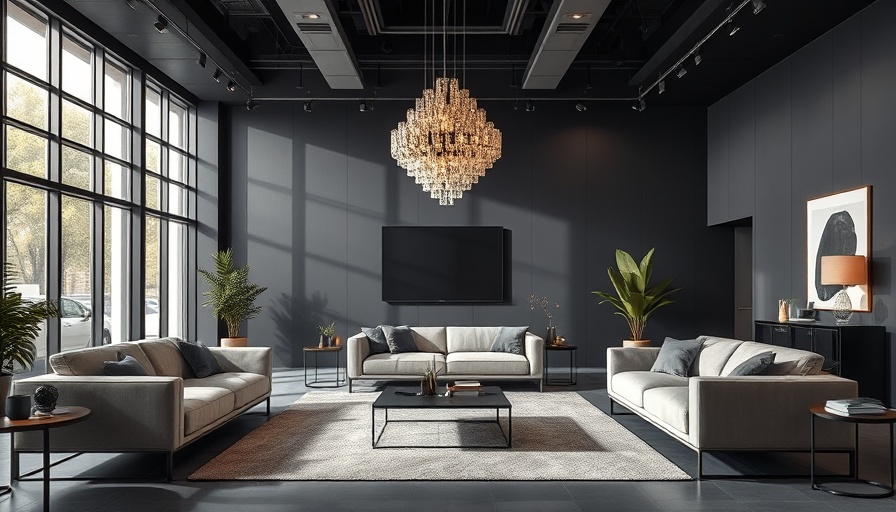
Designing Comfort: The Astraeus Clarke Showroom Experience
For digital nomads navigating the work-from-home landscape, creating a comfortable and inspiring workspace is more critical than ever. Astraeus Clarke, a New York City-based design studio, offers a fresh perspective on this challenge with its newly established showroom in Chinatown, which cleverly integrates aesthetic allure with functional design. Founded by Chelsie and Jacob Starley, the couple has crafted a unique environment that reflects their experiences and roots in the American West.
Blending Western Allure with Modern Functionality
The Astraeus Clarke Showroom stands out as a gathering space that merges functionality and artistic expression. It draws heavily on the founders’ background in renovating distressed homes—a skill acquired years ago while studying in Utah. This experience empowers them to embed a narrative of their West Coast origins into every corner of the showroom.
“Every inch was considered,” Jacob Starley highlights, pointing to the careful selection of decor and furnishings. From vintage pieces to custom-designed elements, the space exudes warmth. For digital nomads, the ambiance not only offers aesthetic pleasure but also creates a backdrop conducive to productivity.
Ergonomics of the Space: Comfort Meets Inspiration
Comfort is vital for anyone working from home. The showroom, with its expansive sofa bed lined with LED strips, is designed not just for decor but for usability. By incorporating lighting fixtures that vary in shape and size, the Starleys have showcased ergonomic principles in their design. Whether you’re tackling projects at the desk or taking a moment to relax on the sofa, the environment supports a versatile range of activities.
Additionally, the integration of soft textures like thick mauve curtains and seating solutions provides physical comfort, enhancing overall focus. Proper lighting further eliminates eye strain, creating a sanctuary ideal for long work sessions.
Gathering Spaces: A New Trend in Remote Work
The concept of showrooms double as gathering spaces is becoming a popular trend, especially in cities like New York where stylish collaboration hubs are essential for fostering creativity among remote workers. Similar efforts have been observed in other local design showrooms, where spaces evolve to accommodate community interactions and engagements.
This fosters an ecosystem of sharing ideas and inspiration, which is crucial for digital nomads who may often work in isolation. As working remotely evolves, spaces like Astraeus Clarke's can significantly influence the way people experience work and collaboration.
Creating Connections through Design
Astraeus Clarke’s ethos revolves around storytelling—a theme that resonates deeply in their showroom. The decor includes personal touches, such as a cowboy hat that symbolizes their roots, and wall texts that narrate personal stories intertwined with the design pieces. This highlights a vital aspect of remote work: the need for connection, even from a distance.
Digital nomads may find themselves longing for those familial interactions often taken for granted in traditional workplaces. Designing a workspace that feels personal with items that evoke remembrances can significantly boost one's morale and creativity.
Conclusion: Prioritizing Ergonomics in Design
As work-from-home trends continue, it is imperative for digital nomads to create versatile and personal spaces that foster productivity and comfort. The Astraeus Clarke showroom is a shining example of how thoughtful design can achieve this balance. By infusing personal touches along with ergonomic considerations, remote workers can reimagine their workspaces into areas that truly inspire.
Consider visiting the Astraeus Clarke showroom in New York to explore how you can apply similar principles in your own workspace. Remember, an inspired workspace leads to increased productivity and a better work-life balance. For those interested in mastering the art of ergonomic design in their work environment, Astraeus Clarke stands as a perfect model of blending aesthetic and ergonomic finesse.
 Add Row
Add Row  Add
Add 




Write A Comment